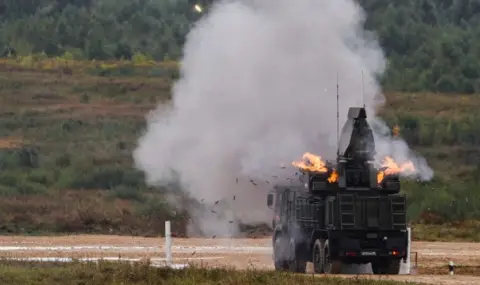The strikes with Ukrainian drones deep inside Russia continue to put pressure on air defenses and force the military command to prioritize the allocation of limited air defense assets to cover what it considers high-value targets.
Satellite images from May 6 show that Russian forces have concentrated at least seven Pantsir-1 medium-range air defense systems around the residence of Russian President Vladimir Putin in Valdai, Leningrad Oblast.
This is stated in the daily analysis of the Institute for the Study of War (ISW).
Ruslan Pukhov, head of the Moscow-based Center for Strategy and Technology Analysis and a member of the civilian advisory board of the Russian Ministry of Defense (MoD), said on July 16 that precisely such coverage is pointless because it allows Ukrainian drones to surround and strike from uncovered directions.
The Russian military clearly does not have the necessary conventional air defense systems to protect all of the country's critical facilities.
Pukhov called on the Russian military to introduce an innovative decentralized approach to protect facilities in Russia from Ukrainian drones and warned that Ukrainian drones are likely to reach deeper into Russia.
Continued pressure has forced regional authorities to explicitly state that Russian companies and local governments cannot rely on Russian air defenses at the federal level.
Pukhov proposed that the Russian military send a fleet of light aircraft to intercept Ukrainian drones, but noted that Russia's low level of light aircraft production would complicate such an effort.
Ukrainian forces continue to attack Russian air defense systems in occupied Ukraine and in Russia's border areas to prepare for the deployment of F-16 fighter jets after their expected arrival in Ukraine in the summer-autumn of 2024. Ukrainian Commander-in-Chief Colonel General Oleksandr Sirsky reported on July 16 that Ukrainian forces struck a S-300 position in the occupied Donetsk region and that Ukrainian forces destroyed 20 S-300 launchers and a total of 15 radar stations over an unspecified period of time.
An investigation by Russian opposition publication The Bell has found that around 650,000 people have left Russia since the start of the war in Ukraine and have not returned.
According to The Bell, official Russian estimates of how many people have left the country permanently since 2022 are deliberately misleading about the actual scale. Instead, it analyzes the immigration statistics of the countries to which Russian citizens fled.
The majority of these Russian citizens went to countries that have visa-free agreements with Russia, including Armenia (which has taken in 110,000 Russians), Kazakhstan (which has taken in 80,000 Russians) and Georgia (which has received 74,000 Russians). Israel and the US took 80,000 and 48,000 Russian citizens respectively.
The actual number of Russian citizens who have left Russia is likely higher than 700,000, given that countries such as Thailand, Indonesia, Azerbaijan, Greece and Cyprus have not provided data on Russian immigration, and Portugal does not have an updated Russian immigration statistics after 2022
In particular, Forbes reported in October 2022, citing sources in the Russian presidential administration, that about 700,000 people fled Russia in the first two weeks after the partial mobilization in Russia began on September 21, 2022.< /p>
Russian officials have previously claimed that the majority of defectors began returning to Russia in 2023, but The Bell's investigation refutes those Russian claims.
The Bell notes that the number of people confirmed to have left Russia permanently may be just 0.5 percent of the entire Russian population, but it is also the largest mass Russian emigration in the last two decades (from the period between 1992-2004, when 1.6 million people left Russia after the collapse of the Soviet Union).
Continuous population loss will continue to affect Russia's economy - ISW previously reported that mass emigration on such a scale has caused a massive shortage of skilled labor and a "brain drain" among the more educated and qualified employees who can afford to live abroad.
